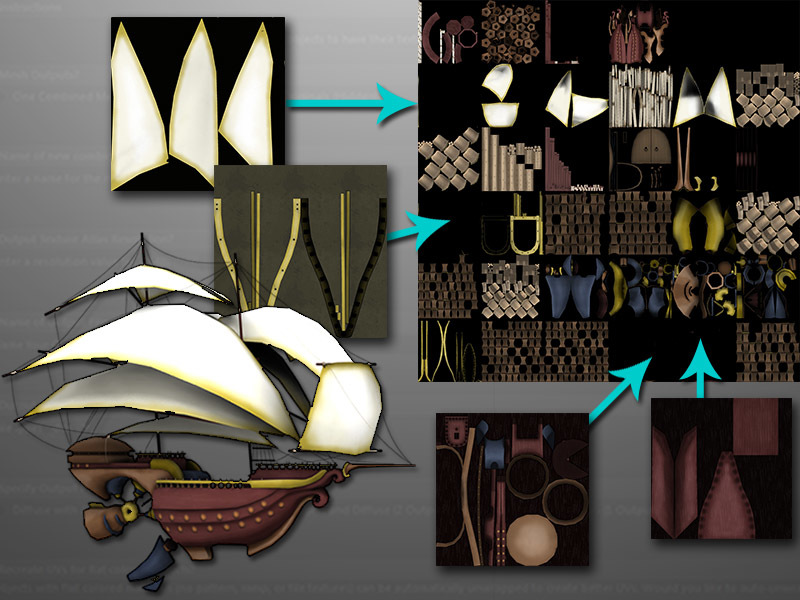Texture Size
Use the smallest texture for your object’s scale without compromising quality. Always Power of 2 (32x32, 64x64, 128x128, 256x256, 512x512 etc) for compatibility with most game engines...png)
Texture Format
Use PNG as the primary format; TGA is also supported, especially when using alpha channels for transparency..png)
Texel Density
Refers to the number of texture pixels per unit of 3D surface it helps minimize stretching and distortion when characters are rigged or in motion..png)
Texture Naming
Match their mesh objects for easier filtering, organization, and selection within game engines. Proper naming is essential for managing complex projects efficiently.Main Texture Types
These are some of the most commonly used texture types in most of our collections _BC = Base color such as Diffuse & Albedo Maps _NR = Normal Map _ORM = OcclussionRoughnessMetallic RGB Maps.png)
Unique Texture Types
_EM = Emissive Map _ID = ID Color Map _A = Alpha or Opacity Maps _BM = Bump Maps _HM = Height Map _HDRI = High Dynamic Range Image Map.png)
Substance Painter Profile
Make sure to copy the profiles in this pathC:\\Users\\<USERNAME>\\Documents\\Adobe\\Adobe Substance 3D Painter\\assets\\export-presets
Profiles
Futureverse_DX.spexp Futureverse_GL.spexp We use Open GL Normals (for Unity, Blender, etc…) or Direct X (for Unreal Engine)..png)
Texture Atlas Optimization:
To optimize texture usage and reduce draw calls, we encourage the atlasing of textures whenever feasible. Atlasing involves combining multiple textures into a single texture map, known as a texture atlas. By atlasing textures, developers can minimize the number of texture maps used within a single material, resulting in improved performance and memory efficiency.
Key Considerations:
- Improving Reduced Draw Calls: Atlasing textures allows for fewer draw calls, leading to improved rendering performance, especially on low-end devices and consoles.
- Memory Efficiency: By consolidating textures into a single atlas, memory usage is optimized, resulting in smoother gameplay experiences and faster loading times.
- Material Complexity: Ensure that materials utilizing texture atlases maintain reasonable complexity to avoid performance bottlenecks on target platforms.
- UV Mapping: Proper UV mapping is essential when creating texture atlases to prevent texture bleeding or distortion.
Implementation Tips:
- Grouping Textures: Identify textures with similar properties or usage patterns to group together in a texture atlas.
- Optimal Packing: Utilize tools or scripts to achieve optimal packing of textures within the atlas, minimizing wasted space and maximizing efficiency.
- UV Layout: Pay close attention to UV layout and padding to ensure seamless texture transitions and minimize artifacts.
- Testing and Optimization: Regularly test and optimize texture atlases to achieve the best balance between visual quality and performance. By adopting texture atlasing techniques, developers can significantly enhance the efficiency and performance of their 3D assets across a range of target platforms.

